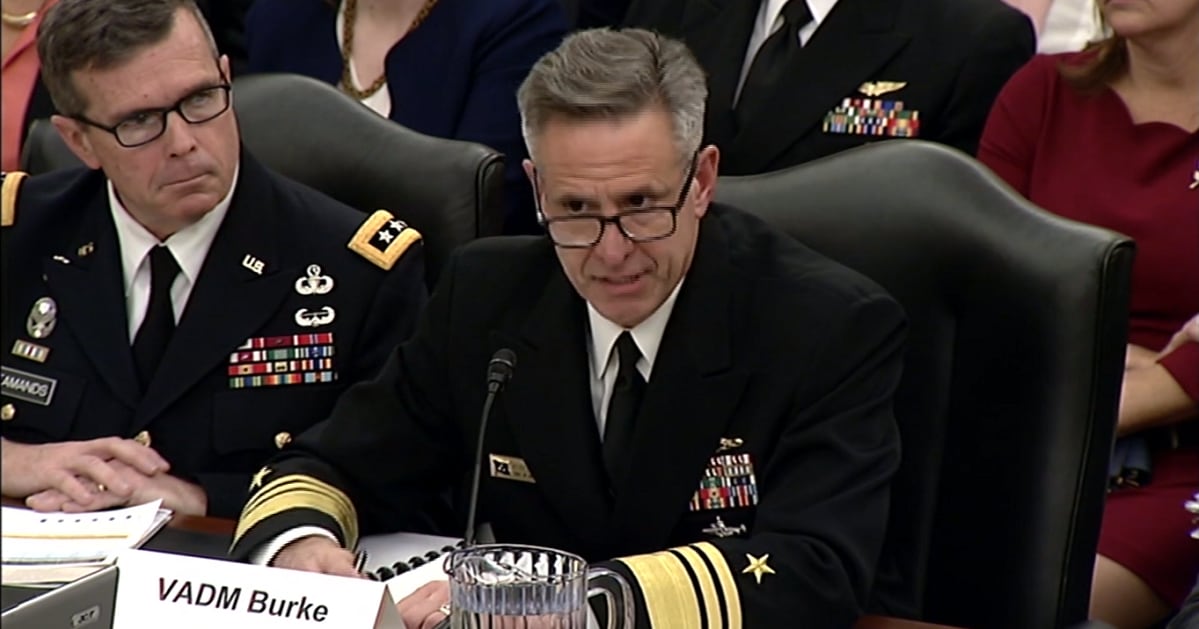For the first time in decades, the Navy has elevated six petty officers to the rank of warrant officer-1, part of an ongoing effort to beef up its offensive cyberwarfare punch.
A trio of cyberwarriors will pin on the rank on Sept. 1, 2019, and the other three will join them a month later on the first day of the new federal fiscal year. Their appointments were announced in the Dec. 7 NavAdmin message 293/18.
Selectees Benjamin Nichols, Jonathon Wynn, Brent Gray, Ryan Snyder and Devan Sorenson hold cryptologic technician 1st class ratings. Nicholas Drenning is a 2nd class.
A special selection board picked them from a pool of 16 applicants, although military officials announced in July that 33 sailors met the requirements for the rank.
Although the Army and Marine Corps have long relied on W-1s, the Navy began phasing the bulk of them out after 1975. According to Pentagon personnel reports, the sea service reported its last W-1s in 1995.
Those eight W-1s marked the end of an era for the nation’s largest maritime service, where warrant officers were the original “mustangs” — officers who rose from the deck ratings to lead sailors.
The new W-1s won’t hold a commission, but enlisted sailors must salute them and render the customary courtesies given to other warrant and commissioned officers. They’ll be distinguished by a simple, yet distinctive, cross fouled anchors insignia worn on their caps instead of the traditional officer badge.
RELATED

The new Navy warrant officer program targets applicants with cryptology ratings and at least six years of military service. Each sailor must hold one of four enlisted classifications — H13A, H14A, H15A or H16A — to be considered.
The Navy launched its cyber warrant program for W-2s and above in 2010 by robbing billets from cyber limited duty officers “to meet the increasing demand for officers with specific proven cyber focused skills and abilities,” said Lt. Richard Moore, a spokesman for the chief of naval personnel.
But cyber skills are in such demand in the civilian marketplace that many sailors weren’t sticking around long enough to make chief petty officer, the traditional springboard for applying for the warrant ranks in the Navy.
The Navy appoints other sailors directly to the rank of chief warrant officer, which also is known as W-2 or CWO-2.
The new W-1s will be able to apply for promotion to W-2 once they reach 12 years of service.
Pinning on W-1 incurred an additional six-year service commitment which starts on the day they assume the rank.
Released on June 4, NavAdmin 140/18 outlines both the process for eligible sailors to apply for the W-1 program in fiscal years 2019 and 2020 and the anticipated career progression of cyber warrant officers.
The Navy’s top personnel officer, Vice Adm. Bob Burke, hopes that the W-1 program nixes the need to appoint civilians with high-demand tech skills as mid-level or senior petty officers.
Burke’s command continues to explore directly commissioning up to the rank of captain those civilian supervisors with top cyber skills, part of the reforms unleashed in the landmark 2019 National Defense Authorization Act.
Navy Times editor’s note: Due to an error by Big Navy, we’ve changed the copy above to reflect that the sea service kept making W-1s after 1975, just not very many. Thanks to an alert reader who spotted the mistake, we went back to the annual Department of Defense personnel statistical report for the end of FY 1993 and found that the Navy reported 51 W-1s on active duty. There were none at the end of FY 1994, only eight in FY 1995 and the rank appears to have disappeared completely by the end of FY 1996. We’ve informed the Navy of the error.
Mark D. Faram is a former reporter for Navy Times. He was a senior writer covering personnel, cultural and historical issues. A nine-year active duty Navy veteran, Faram served from 1978 to 1987 as a Navy Diver and photographer.





